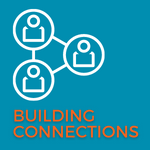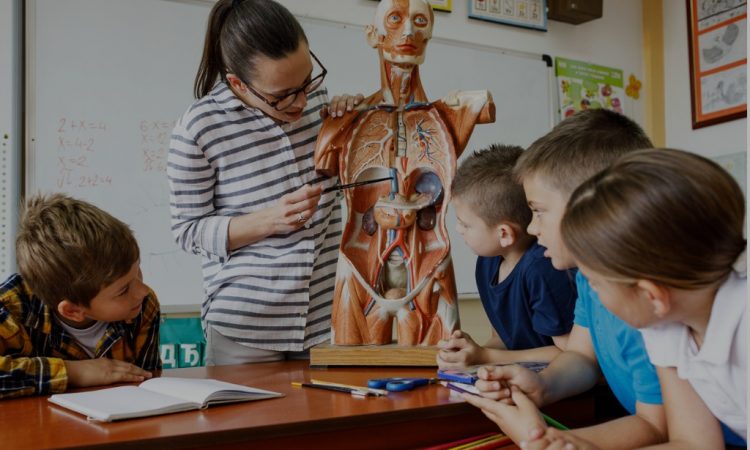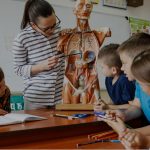This is the story of how one school district, with leadership from the superintendent and support from their school board and community, created a K-12 career development model, the World of Work™ initiative (WoW), for their 16,000 students across 28 schools.
Relationships have been essential to the success of WoW as teachers, counsellors, program specialists, families and community partners have come together to support this approach to career-related learning. Having those relationships in place – with a sustainable model, a strong case and the necessary staff – has made all the difference in advancing the initiative.
For education leaders considering deploying career-related learning in their community, the Cajon Valley example provides valuable insights for consideration.
Engage the business community
Cajon Valley Superintendent Dr. David Miyashiro started by engaging with local businesses and elected officials soon after accepting his role in the district. He met with the mayor, city manager, chief of police, chief of fire, and leaders from the armed forces and local business. He focused on one specific question: “If you were running our schools, what would you change?” They often responded with some version of the following: “Education has stigmatized some of the most important jobs in our community. Stop stigmatizing jobs and change the narrative away from the four-year college-for-all.”
It was this feedback, through many listening sessions, that led the board and superintendent to advocate for the WoW initiative. Many of the leaders from the listening sessions became district partners who are now involved in the development and deployment of WoW across the district.

Building the case for career development
Building a case for career development in K-12 schools is an opportunity to share information about the changing world of work and reaffirm the important role of educators. There is a growing body of current scholarship to support this case. Some recent examples include: Career Development In The Early Grades (CERIC), Drawing the Future, research from the OECD, research linking SEL with Career Development, and longitudinal research highlighting the connections between vocational interests and early career success.
These papers provide valuable evidence for building the case for career development and gaining the attention of unwilling staff. However, in Cajon Valley, the message went further to include local data. These additional data points helped to establish further support for WoW.
- Opportunity Youth: In the U.S., the number of 16-24 year old students that are out of school and not working was growing before the pandemic (Brookings). In El Cajon, that statistic is tracked by the San Diego Workforce Partnership. Findings revealed that Cajon Valley was fourth on the list of 42 school districts for having the most opportunity youth in the region.
- ZipCode Destiny: Dr. Raj Chetty is a nationally recognized researcher from Harvard who studied the tax records of U.S. taxpayers. His study showed that aside from the rare exceptions, zip code predicts a student’s economic destiny. El Cajon has one of the highest-poverty zip codes in the region.
By curating and communicating a compelling message with substantive facts and data, the Cajon community began to see why developing happy kids, living in healthy relationships, on a path to gainful employment is so important.
Define your model
Integrating career-related learning within the classroom requires a stable model that provides natural connections for students and teachers. The Cajon model equips teachers with the tools to integrate career exploration, work simulation, meeting professionals and practising real-world skills. And because it is focused on deployment in the classroom, the model is stabilized by living within the instructional core supported by consistent student and teacher relationships. The model is further stabilized by using a common language of career, grounded in Holland’s RIASEC framework.
No matter what model is chosen or developed, it is important to design with teachers in mind. Teachers and staff commonly receive little training in deploying career-related learning, so a significant effort should be made to provide ongoing training.
World of Work program specialists
Many teachers felt apprehensive about integrating career-related learning in the classroom through WoW. In many cases, especially in the early grades, they’d never had training on career theory, labour market information or how to approach careers education. There was uncertainty and in some cases fear of trying.
Classroom adoption was accelerated with the development of a full-time-program-specialist position that focused on building relationships with educators, and advancing the training and tools to support WoW district-wide integration. In Cajon, there are two program specialists, a former elementary teacher and a secondary teacher, who have developed expertise in career theory, LMI, career and technical education, and career-related learning. With this new knowledge, and their classroom pedagogy and technology experience, they are trusted connections for educators, counsellors and paraprofessionals. The program specialist role is an important district-wide position to ensure all educators have the needed support and trusting relationships to be successful.
Invite parents to a two-generational model
Building relationships with parents by inviting them to learn how and why career-related learning is happening in school is important for launching a WoW style initiative. In Cajon Valley, thousands of parents have learned about WoW. With the support of principals, teachers, counsellors and the family and community engagement office (FACE), parents are becoming more engaged in their child’s academic and career learning. It is not uncommon to hear parents say, “I wish I’d had this when I was in school.”
The Cajon team has explored many ways to include parents through programming that includes information nights, parent university, parent and student career development sessions, parent career talks, parent career field trips, parent school career broadcasts and student-led conferences. These unique experiences build on the common language and process of integrating career-related learning in the classroom. The process expands parent engagement while also building hope and awareness of post secondary and career options. The program model was recently included in the Brookings Institution playbook for family-school engagement.
Preparing students for the world of work has never been more important. As social, economic, and technological forces shift the landscape of work, governments, businesses, educators and parents are asking questions and making recommendations about the role of the educational system in equipping young people to navigate these monumental shifts. By working together, we can help ensure young people have the tools they need to prepare for their possible futures.
Ed Hidalgo will be co-presenting a virtual session with Dr. David Miyashiro at CERIC’s virtual Cannexus22 conference on “Creating a Career Development Culture Across K-12.” Learn more about the conference, taking place Jan. 24-26, 2022 at cannexus.ceric.ca.





